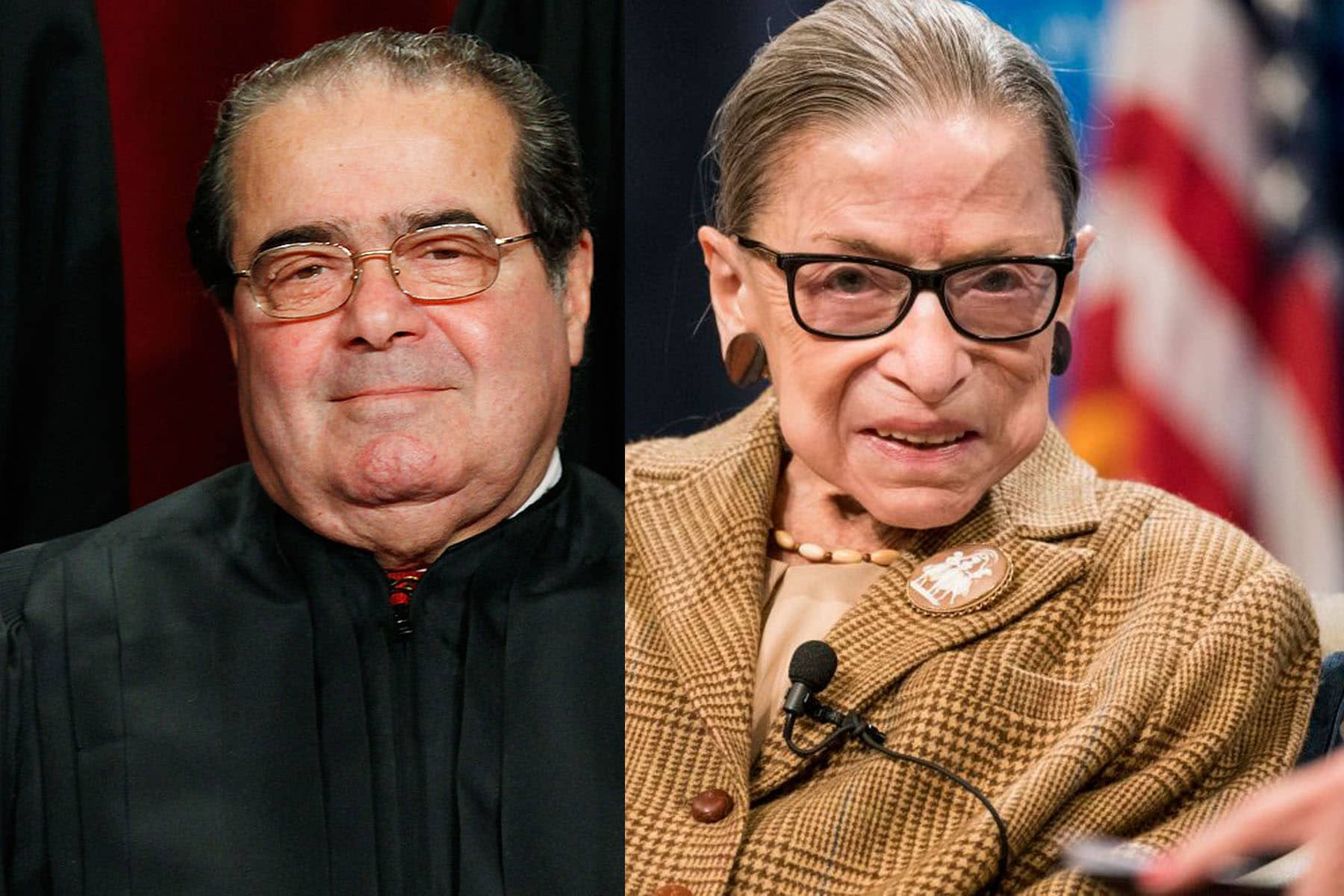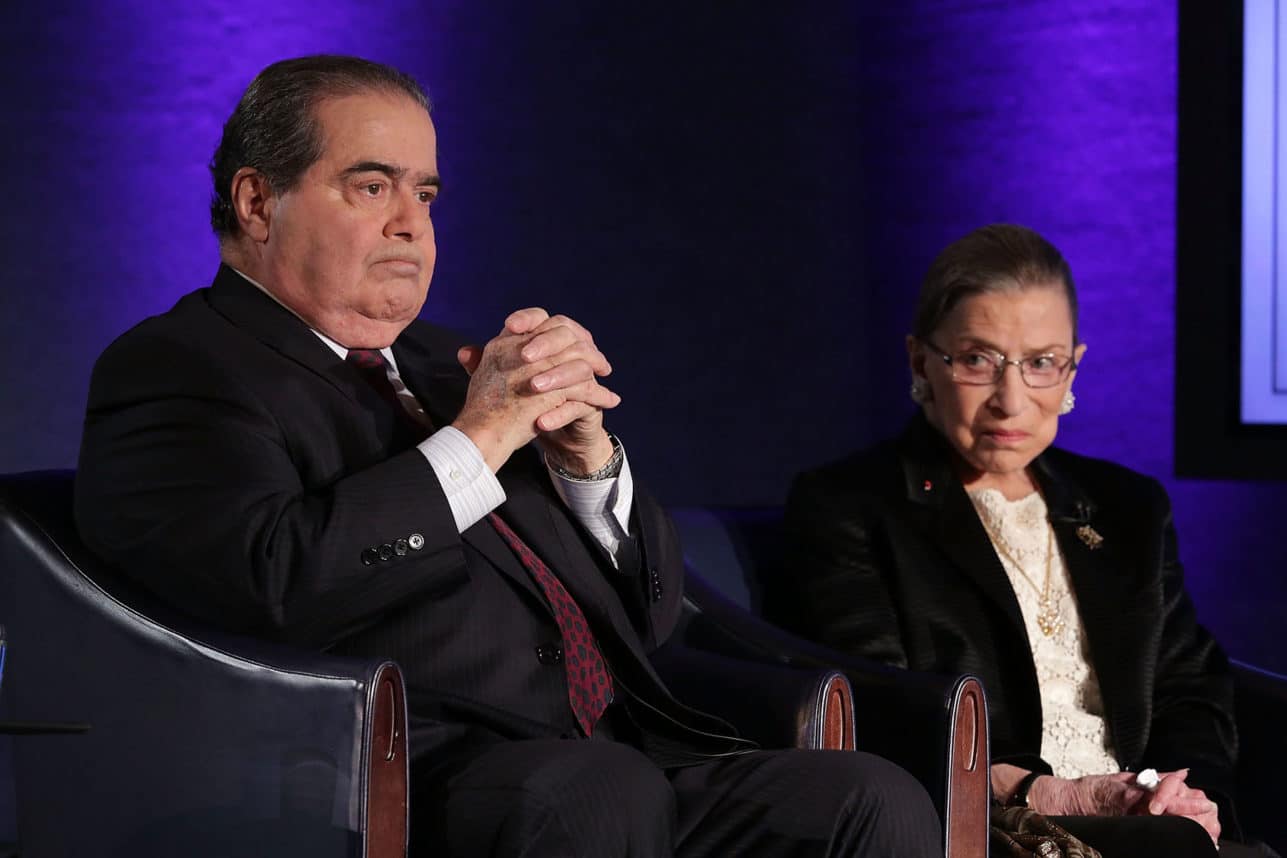
There’s plenty to love about Ruth Bader Ginsburg, the trailblazing liberal justice who passed away on Sept. 18 at the age of 87.
Many of her fans love her because she was a champion of their cherished causes, from abortion to immigration to health care to women’s rights to gender equality, among others.
In the Jewish world, there is obvious pride in having a Jewish woman on the highest court in the land.
Even in popular culture, Ginsburg captured the nation’s imagination. Her nickname, “Notorious RBG,” is a play on the name of the rap star, The Notorious B.I.G. She earned it by tirelessly defending human rights, through her grueling workouts and her tenacity in surviving several bouts of cancer.
“Throughout Justice Ginsburg’s entire career, there was sort of like nothing that could ever take her down,” Julie Cohen, the director of the Oscar-nominated documentary “RBG,” told Yahoo News. “If she got rejected, if she got discriminated against, if she got kind of dismissively pushed aside, her response to that was always just to push right past that.”
Perseverance and resilience, then, are things we can learn from Ginsburg in this horribly challenging pandemic year.
But there is something else, something perhaps even more critical in these divisive times that we can learn from her.
It’s well known that Ginsburg had a close friendship with a colleague who was her ideological opposite, the late Supreme Court Justice Antonin Scalia.

Ginsburg and Scalia were colleagues for years on the DC Circuit Court of Appeals before Scalia was appointed to the high court in 1982 by President Ronald Reagan. “I have missed Ruth very much since leaving the court of appeals,” Scalia, who died in 2016 at the age of 79, told an audience years after he was appointed.
Considering how strongly Ginsburg felt about her liberal views, how could she be so friendly with someone who so sharply disagreed with her? And how could Scalia himself reciprocate such an extreme level of tolerance?
One possibility is that they didn’t see their ideological differences as something to “tolerate”—like a bitter medicine or a nasty flu. Rather, they separated their ideology from their humanity. Easier said than done, right?
In our era of vicious political division, it’s almost impossible to conceive of ideological rivals becoming such close friends. We’ve become so attached to our political worldviews it’s hard to even fathom a deep friendship with someone on the “other side.”
Maybe that’s why in the eulogies of Ginsburg, we don’t hear much about her friendship with her ideological opposite— it’s too hard to relate to. It’s easier to focus on Ginsburg’s legacy, her remarkable character and her many legal accomplishments. After all, compared to the crucial issues of the day, a friendship doesn’t seem like much of an accomplishment.
We all value friendships, but we usually stick to like-minded friends. It feels more enjoyable, less stressful. Ginsburg and Scalia transcended that thinking. They found a way to stay true to their ideologies while honoring the timeless value of friendship.
We all value friendships, but we usually stick to like-minded friends. It feels more enjoyable, less stressful. Ginsburg and Scalia transcended that thinking.
Their relationship was so special it spawned an opera, “Scalia/Ginsburg”, inspired by their court rulings. After Scalia died, Ginsburg said:
“Toward the end of the opera “Scalia/Ginsburg”, tenor Scalia and soprano Ginsburg sing a duet: ‘We are different, we are one,’ different in our interpretation of written texts, one in our reverence for the Constitution and the institution we serve. From our years together at the D.C. Circuit, we were best buddies.”
In that statement is a pearl of wisdom. Ginsburg and Scalia differed in their interpretation of written texts, but they shared a reverence for the Constitution and the institution they served.
In other words, their friendship was not simply an expression of their humanity. It rested on a fundamental pillar they shared.
Their friendship was not simply an expression of their humanity. It rested on a fundamental pillar they shared.
Can we find pillars today which we share with our ideological foes? If anything, we’re going in the opposite direction. We’ve become geniuses at finding the things which divide us. Those pillars that we thought we shared are crumbling beneath us.
As we honor the extraordinary legacy of Ruth Bader Ginsburg, as we recall her trailblazing accomplishments, as we sit shivah for a Jewish and American hero, let us not forget the part of her legacy that speaks directly to our divisive times.
Of all the things to love about RBG, “We are different, we are one” may be the one we need most.























 More news and opinions than at a Shabbat dinner, right in your inbox.
More news and opinions than at a Shabbat dinner, right in your inbox.